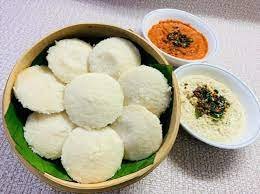
Proven Weight Loss Diets to Kick Start Your Journey

With rising rates of obesity and weight-related health issues, India faces a significant weight management challenge. The search for the “Best Weight Loss Diet” often leads to fad plans promising quick fixes, but these usually offer only temporary results and frustrating rebound weight gain.
Table of Contents
Introduction
For lasting success, the key lies in a sustainable approach rooted in the wholesome goodness of traditional Indian foods and principles.
Let’s ditch the “fad” mentality and discover how incorporating the best aspects of Indian cuisine can lead to healthy, long-term weight loss. This isn’t about deprivation; it’s about embracing flavourful, nourishing meals that support your goals without sacrificing enjoyment.
Key Principles of best weight loss diet
The quest for the “best weight loss diet” can be overwhelming, with countless conflicting messages about what to eat or avoid. However, sustainable weight loss doesn’t rely on gimmicks or deprivation. Instead, it’s founded on a few key principles that work with your body, not against it:
Calorie Deficit: At its core, weight loss depends on creating a calorie deficit. This means using more energy (through daily activity and exercise) than you take in through food and beverages. Think of it like a budget – if you spend more than you earn, you’ll start drawing from your savings. Similarly, a calorie deficit prompts your body to use stored fat for energy.

Balance Macronutrients: All foods can fit into a healthy weight loss plan. Instead of cutting whole food groups, focus on finding a balance of carbohydrates, proteins, and fats. Carbohydrates fuel your body, protein builds and repairs tissue, and healthy fats help you feel full and satisfied.

Portion Control: Moderation is key! You can still enjoy the foods you love while managing your weight. Learn to listen to your body’s hunger cues and practice intuitive portion sizes instead of feeling compelled to finish everything on your plate.

Mindful Eating: Slow down and be present during meals. Pay attention to the flavors, textures, and how your food makes you feel. Avoid eating when distracted, bored, or emotional. Tuning into your body’s signals helps separate true hunger from other triggers to eat.

The Power of Indian Cuisine for the Best Weight Loss Diet
Indian cuisine offers a delicious and satisfying path toward your weight loss goals. Let’s explore why its emphasis on fresh ingredients, vibrant flavours, and flexibility make it a fantastic choice:
Whole Foods: Indian cooking is a celebration of whole foods! You’ll find an abundance of vegetables in curries and stir-fries, fiber-rich legumes like lentils and beans as the base for dals and soups, and whole grains like rice and roti. These foods are packed with nutrients, keep you feeling full, and promote a healthy digestive system – all essential for weight management.

Focus on Flavor: Indian spices aren’t just about heat – they bring a symphony of tastes to your meals. Turmeric, cumin, coriander, ginger, and countless others add depth, warmth, and complexity. This burst of flavor keeps dishes exciting, satisfying your palate and reducing the temptation to reach for sugary or processed snacks.

Adaptability: Whether you follow a vegetarian, vegan, gluten-free, or other specialized diet, Indian cuisine has something for everyone. The richness of vegetarian dishes shines through, with paneer (Indian cottage cheese) and legumes providing ample protein. You can easily adjust spice levels or swap out vegetables to create meals that fit your preferences and fuel your weight loss journey.

Note: There might be affiliate links mentioned here. We may receive a commission if you purchase a product through an affiliate link. There is no additional charge for you. Please do your own research before making any online purchases.
Meal Planning for Weight Loss: An Indian Focus
Let’s dive deeper into the delicious world of Indian cuisine to craft meals that support your “best weight loss diet” goals. Here’s an expanded range of ideas to inspire you:
Breakfast Ideas
Idli/Dosa with sambar and chutney: Beyond simply mentioning sambar, explore different chutneys like coconut, tomato, or mint-coriander to add variety. Experiment with fillings for dosas, like spiced potatoes or mixed vegetables, for extra flavor and nutrients.

Vegetable poha/upma: Customize with seasonal vegetables – peas, carrots, cauliflower, and beans create delightful flavor combinations. Add a squeeze of lemon and a sprinkle of fresh cilantro for an extra flavor boost.

Besan chilla: Get creative with fillings! Sautéed spinach, paneer, or mushrooms add protein and heartiness.

Sprouts salad: Toss different types of sprouts together (moong beans, chickpeas, etc.) and dress with a tangy vinaigrette made with lime juice, chopped onions, and green chilies.

Lunch Ideas
Whole wheat roti/brown rice with dal, subzi, and curd: Play with various dals (red lentils, yellow lentils, etc.) and try regional subzi preparations for diverse flavours. Experiment with raita variations – add grated cucumber, roasted cumin, or chopped vegetables.

Lentil-vegetable soup with salad: Go beyond the basics with soups like tomato-lentil, spinach-lentil, or mixed vegetable lentil for a flavourful and satisfying lunch.

Khichdi with raita: Enhance the simple khichdi by adding spices like cloves and cinnamon for warmth or try different types of lentils (green, whole brown) for variation.

Dinner Ideas
Light vegetable curries with roti/rice: Explore the vast repertoire of Indian curries – cauliflower and potato, spinach and paneer, eggplant, okra – focusing on recipes that use yogurt or tomato-based gravies instead of heavy cream.

Grilled chicken/fish with vegetables: Marinate the protein in yogurt with spices like turmeric, coriander, and chili powder for incredible flavour. Grill or roast seasonal vegetables alongside it.

Salad with a lentil-based main course: Create unique salads using lentils, roasted vegetables, leafy greens, and a light vinaigrette. This combination is both filling and packed with valuable nutrients.

Snack ideas
Roasted nuts (almonds, walnuts, cashews): Lightly spice them with cumin powder, chili powder, or a dash of garam masala for a savory twist.

Fruits: India offers a bounty! Choose from mangoes, guavas, pomegranates, and a myriad of other seasonal options.

Makhana (fox nuts): Roast makhana with a touch of ghee and sprinkle with black pepper and salt for a satisfying snack.

Important Note: Portion control is key! Focus on building balanced, colourful meals, and listen to your body’s hunger and fullness cues. Enjoy the flavours and variety of Indian cuisine as you discover foods that nourish your body and support your weight loss journey.
Beyond the Plate: Habits for Success
While the foods you eat are vital for your “best weight loss diet,” remember that weight loss is about more than just what’s on your plate. These lifestyle habits work hand-in-hand with your diet:
Hydration: Water is essential! Keep a water bottle handy and aim to drink throughout the day. Herbal teas and unsweetened lime water are refreshing alternatives.

Regular Exercise: Include activities you enjoy, even if it’s just a brisk walk or dance session. Aim for at least 30 minutes of moderate intensity exercise most days of the week.

Adequate Sleep: Lack of sleep disrupts hormones that regulate hunger and metabolism. Prioritize 7-8 hours of quality sleep each night.

Stress Management: Find healthy outlets for stress, whether it’s meditation, yoga, deep breathing, or spending time in nature. Chronic stress can hinder weight loss efforts.

Conclusion
Sustainable weight loss is a journey, not a race. Embrace the rich flavors and health benefits of Indian cuisine as you learn to eat intuitively and nourish your body. Remember, consistency is key! Small, gradual changes made over time create lasting results.
Disclaimer: The information provided in this article is for educational purposes only and should not be considered as a substitute for medical advice. Consult a healthcare professional before implementing any home remedies or making significant changes to your lifestyle.






